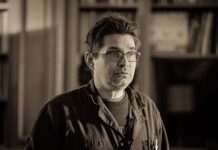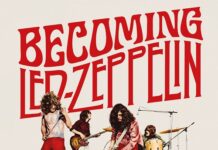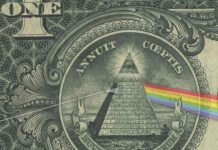By Shawn Perry
I always wanted to go to England and see everything I’d ever read about. As an English major in college, I envisioned the country as a virtual treasure chest of culture, literature and history. Within Westminster Abbey — a resting place for much of Britain’s monarchy — there is Poet’s Corner with its intricate effigies commemorating some of the greatest writers in history — William Shakespeare, William Wordsworth, Samuel Johnson, T.S. Eliot and Dylan Thomas. In the crypt of St. Peter’s Cathedral, amongst fallen war heroes and diplomats, there are effigies for Christopher Wren — the architect who almost singlehandedly built the “new” London — as well as poet William Blake, known in some circles for inspiring Aldous Huxley and Jim Morrison. Inscribed in stone, these four lines of Blake’s sent a clear message:
To see a world in a grain of sand
And a Heaven in a wild flower
Hold infinity in the palm of your hand
And eternity in an hour
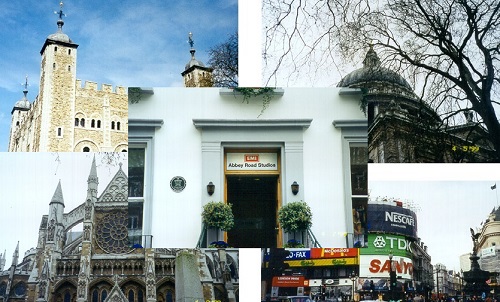
A bright and conscientious moment in time was captured. I was compelled to move forward and make the most of this experience. I was going to make it a magical history tour.
I also came to England to explore another part of its vast history — the history of British music. For as much as I enjoyed seeing the Tower of London, where Henry the VIII kept his artillery and beheaded his detractors, there were more contemporary sights and sounds I wanted to sample. I went to Abbey Road where the Beatles and Pink Floyd made their masterpieces; The Royal Albert Hall where Cream played their last gig and Keith Emerson was banned for burning the American flag; Piccadilly Circus, the entertainment hub of London and stomping grounds for some of Britain’s most notorious pop stars. But my adventure wouldn’t have been complete, if I hadn’t taken a side trip to Liverpool to see where, in my opinion, British music took a giant leap from the confines of U.K.
I’d about had my fill of the England’s lecherous leaders and restaurants named in their honor, i.e., Burger King. I headed over to High Kensington and feasted on the critically-acclaimed cuisine of Sticky Fingers, a rather unassuming Hard Rock-style eatery owned by former Rolling Stones bassist, Bill Wyman. As I marveled at the walls adorned in Stones memorabilia. I presented a coupon I copied off the restaurant’s web site, and managed to save a couple of pounds on the burger and ale I heartily consumed. As I was leaving, I spent several more pounds on Sticky Fingers memorabilia.
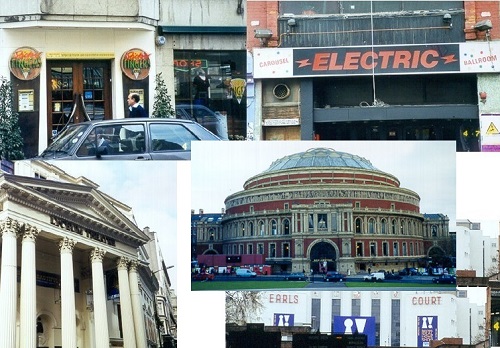
The urge settled in. I’d already re-assured my instincts about the significance of British music by checking out the wax figures of the Rock Circus exhibit in Piccadilly. I’d inadvertently bumped into some of London’s more infamous concert venues including The Electric Ballroom, Earl’s Court and The Lyceum Theatre. I found myself wandering around in some of London’s coveted pop art districts in Soho and Camden Town. Unfortunately, there wasn’t any particular event happening at the time and I never really tasted the nightlife.
I awoke at 5 AM on a warm April Tuesday, took the tube from my base in Hither Green to Charing Cross and transferred over to Euston Station for a train to Liverpool — the birthplace of the Beatles. Many of my acquaintances found it odd that Liverpool was part of my itinerary, but I felt I had to see it while the desire was still intact.
Traveling about 200 miles northwest of London, my ride on the British rail was comfortable and equally extraordinary. I perused the splendor of the English countryside — with its lush-green and rolling hills, sheep a-plenty and basic, few-but-far-between rural trappings.
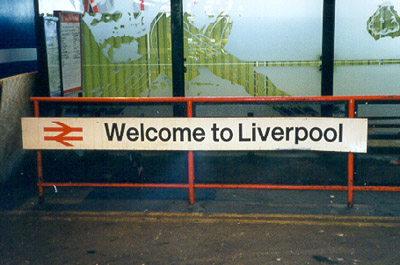
My entry into Liverpool was rather unspectacular. It wasn’t until I was greeted by a Welcome To Liverpool sign that I actually believed I was there. I stumbled through the train station and out onto Lime Street, in search of anything that said “Beatles.” I expected to see a big Magical Mystery Tour bus or booth — something that would whisk me through the city to every portal that John, Paul, George and Ringo had ever frequented. To my surprise, there was nothing of the kind. I asked a cab driver about this and he smiled. He told me that if I wanted to see the Beatles’ Liverpool, he’d gladly take me around and personally narrate. Loaded up with over £ 150, I took a chance and hopped into the backseat of the cab.
I asked my cab driver — Frank — about The Beatles Story exhibit over at Albert Dock. He said that’s where he’d drop me off after the tour. He seemed to have my best interests at heart, so I sat back and enjoyed the ride. Our first stop was at the Liverpool Institute, a school both Paul McCartney and George Harrison attended. Frank told me McCartney continues to financially support its endeavors. “Ringo lived around here. I’ll show you his house.” Frank said.
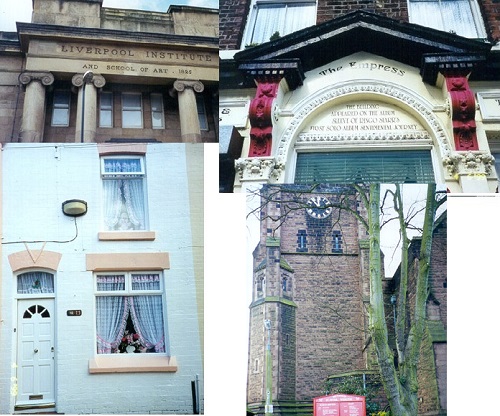
Frank, I was to learn, had a very colorful history himself. He told me he used to be in a rival band of the Beatles. He had been particularly close to John Lennon. “He was my best man when I got married,” he stated emphatically. Frank looked worse for the wear but I went along with his tales. It made the whole excursion a bit more exciting.
We rolled down Admiral Grove and up to a distinctively white row house with pink trimmings: Ringo Starr’s house. Just up the street is a pub called the Empress, which appears on the cover of Ringo’s first solo album, Sentimental Journey.
We cut over to Arnold Grove where we came upon the house where George Harrison was born. Frank wasn’t sure which house it was until a little girl of the neighborhood knowingly pointed it out for us. I’m sure she’s had her share of star-struck tourists.
From there, we drove over to the St. Peter’s Parish, Woolton. Frank said this was where Paul McCartney first saw John Lennon and his band the Quarrymen. I realized I was standing where the seed for the world’s most successful songwriting team was planted. We walked around the back and I noticed a small cemetery. I would later learn that a woman by the name of Eleanor Rigby is buried there.
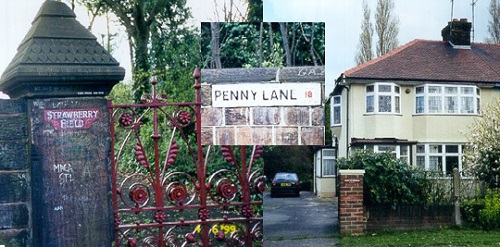
We barreled down Penny Lane — where I searched high and low for barber shops, bankers and firemen — and ended up on Beaconsfield Road, passing through a seemingly ominous part of town. Frank inched down further, settled up to a gate, and my eyes fell promptly on the letters etched upon the left pillar: Strawberry Field. This was, of course, the Salvation Army orphanage Lennon put on the map when he wrote his hypnotic “Strawberry Fields Forever.” The adjoining walls are covered in graffiti — mostly heartfelt memories of Lennon. Frank told me that the orphanage received generous financial support from Lennon during his last visit to Liverpool in 1970. Yoko Ono, Lennon’s matriarchal widow, has made subsequent donations during her visits. It’s reassuring to know that some of the money Yoko continues to milk from her husband’s name is going toward a worthwhile cause.
Frank had previously driven me down Newcastle Road by a rather sullen-looking row house where Lennon spent his first 5 years as a child. I also caught a glimpse of an apartment building where Lennon and first wife Cynthia briefly lived.
From Strawberry Field, it’s just a short jaunt over to 251 Menlove Avenue, where, with his Aunt Mimi and Uncle George, John Lennon spent most of his formative years — writing, drawing, playing guitar and rebelling. Located across from a golf course, in an upper-middle class section of Liverpool, “Mendips,” as it’s called, is remarkably preserved and completely off-limits to tourists. Even though Lennon’s aunt vacated the house over 30 years ago, it still attracts a lot of curiosity. “They’ve had problems with people knocking at the door and wanting a tour,” Frank explained.
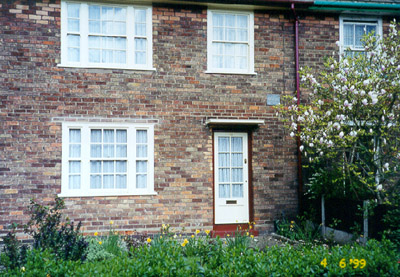
Last, but not least, Frank took me down Forthlin Road to the house where Paul McCartney lived as a teenager. Declared a historical site by the National Trust, one can actually go inside and witness a remarkable recreation of the McCartney household. Unfortunately, there’s a bit of red tape to go through in order to gain admission, and I missed out on this opportunity.
From here, we headed into another direction — to the clubs the Beatles played at. We drove by the Dovedale Towers — formerly St. Barnabas Church hall where the Quarrymen had played — and parked in front of the Blue Angel — a club once owned by Allan Williams, the Beatles’ first manager. Frank told me he used to drink pints with Lennon here. Just around the corner is the Jacaranda, another club formerly owned by Williams. Frank led me inside and chatted it up with the present manager. Before I knew what was happening, I was following Frank and the manager into the cellar. The Beatles used to play down there.
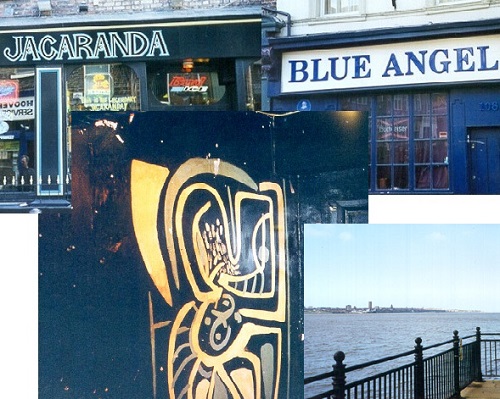
The manager motioned toward the murals on the walls that both Lennon and Sutcliffe had painted. Back upstairs, he showed me a Liverpool Institute class picture from the ’50s that featured McCartney, Harrison, and Beatle associate Neil Aspinall. “And that’s me,” he pointed at another circled figure in the picture. He told me that Allan Williams occasionally drops in and tells stories. I was captivated.
Moments later, I was back in the cab and off to Albert Dock. As he deposited me in front of the Beatles Story exhibit, I asked Frank about the Cavern — the one (and the most famous) club he hadn’t taken me to. He remarked that it was just a stone’s throw from where we were. “You’ll find it,” he said.
The Beatles Story is situated in a fairly new shopping complex on the banks of the River Mersey that leads out to sea. The exhibit itself is extensive, and I faithfully trailed through each phase of the Fab Four’s career. Although I failed to take any photos inside, I managed to snap a picture of a John Lennon statue inside the exhibit’s gift shop. Then I proceeded to drop about £ 50 on Beatles Story merchandise.
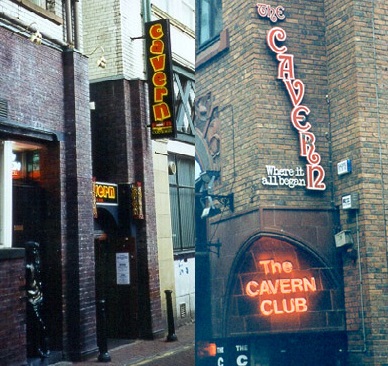
Outside, I caught a short taxi ride over to Mathew Street (a.k.a., “Beatle Street”) to see the Cavern Club. These days, there are actually two Caverns: the Pub apparently set up to pay tribute to the Club, which was actually rebuilt and sits where the original stood. I ventured down into the basement of the latter and saw a tunnel-like dance floor leading to the stage. Although not the actual setting, it’s amazing the Beatles played almost 300 shows here.
When I came out of the Cavern Club, it was pouring rain. Brandishing my trusty umbrella, I continued down the alleyway to the Beatles Shop where every remnant of Beatlemania can be savored and bought for the right price.
It was getting late and I had seen just about everything I came to see, so I decided to find my way back to the Lime Street station. I couldn’t seem to hail a cab, so I walked for a few blocks and finally caught the Empire Theatre in my sights. This is the last venue in Liverpool the Beatles played back in 1965. It is also next to the train station. I was home free.
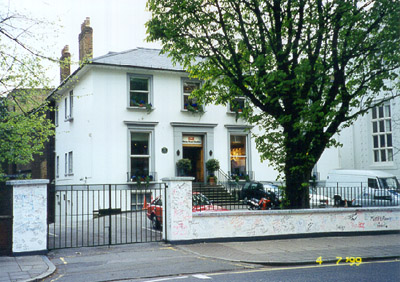
The train back to London seemed to drag on a bit. As I watched commuting businessmen sipping on pints after a long day at work, I felt completely satisfied and fulfilled.
The next day, I was back on the streets of London. I checked out Madame Tussaud’s and was pleasantly surprised to find — amongst Kings, Queens and Presidents — wax figures of the Beatles. I had come full circle, and there were a still a couple of places I needed to go. I started toward St. John’s Wood.
I stopped off at the city’s number one loo (bathroom) and went around the corner to Cavendish Avenue where I saw the first house McCartney bought in London. Even in the heady days of Beatlemania, Paul used to walk to the studio from here. Indeed, a short stroll away and I was suddenly in front of Abbey Road Studios.

On the walls, there are layers of graffiti — mostly messages to the Beatles with the occasional reference to other notables such as Pink Floyd. I stared at the epic, creative shrine for a good half-hour and really wanted to go in. There are signs warding off intruders, but the place is clearly open for business. I thought about approaching the studio as a perspective client, but I couldn’t think of any tangible way to present myself.
So I walked across the famous Abbey Road crosswalk some two or three hundred times. I watched others do it, stopping traffic as they attempted to emulate the famous Beatles album cover. One guy even went so far as to take his shoes off – just like Paul – despite the rather cool weather. I caught a bus and headed back to the central part of the city.
Along the way, I stopped off at a rather ordinary-looking building on Baker Street. This was where the Beatles’ Apple Boutique once stood. It’s the same building without the psychedelic mural — washed off at the insistence of neighboring businesses. Of course, anyone familiar with Beatle lore knows this was where they committed one of their first financial blunders. When they closed down the Apple Boutique, they literally gave away the inventory.
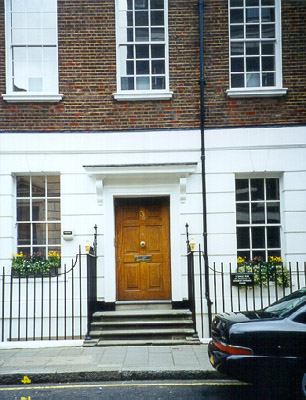
The final site I saw was where the final Beatle performance was held. How fitting. 3 Saville Row is in a high-rent district near Piccadilly. This is where the Beatles’ Apple Corp. was first headquartered. On its rooftop, the Beatles played for the last time before a small audience. Had they known it at the time, the police might well have left the ensuing disturbance alone.
The day before, I had seen where the Beatles began. Now I was standing before the building where it had ended. Four guys who became an international phenomenon — a sensation of hype and well-groomed talent — germinated and terminated within a couple of hundred miles of each other. A truly magical history tour.




